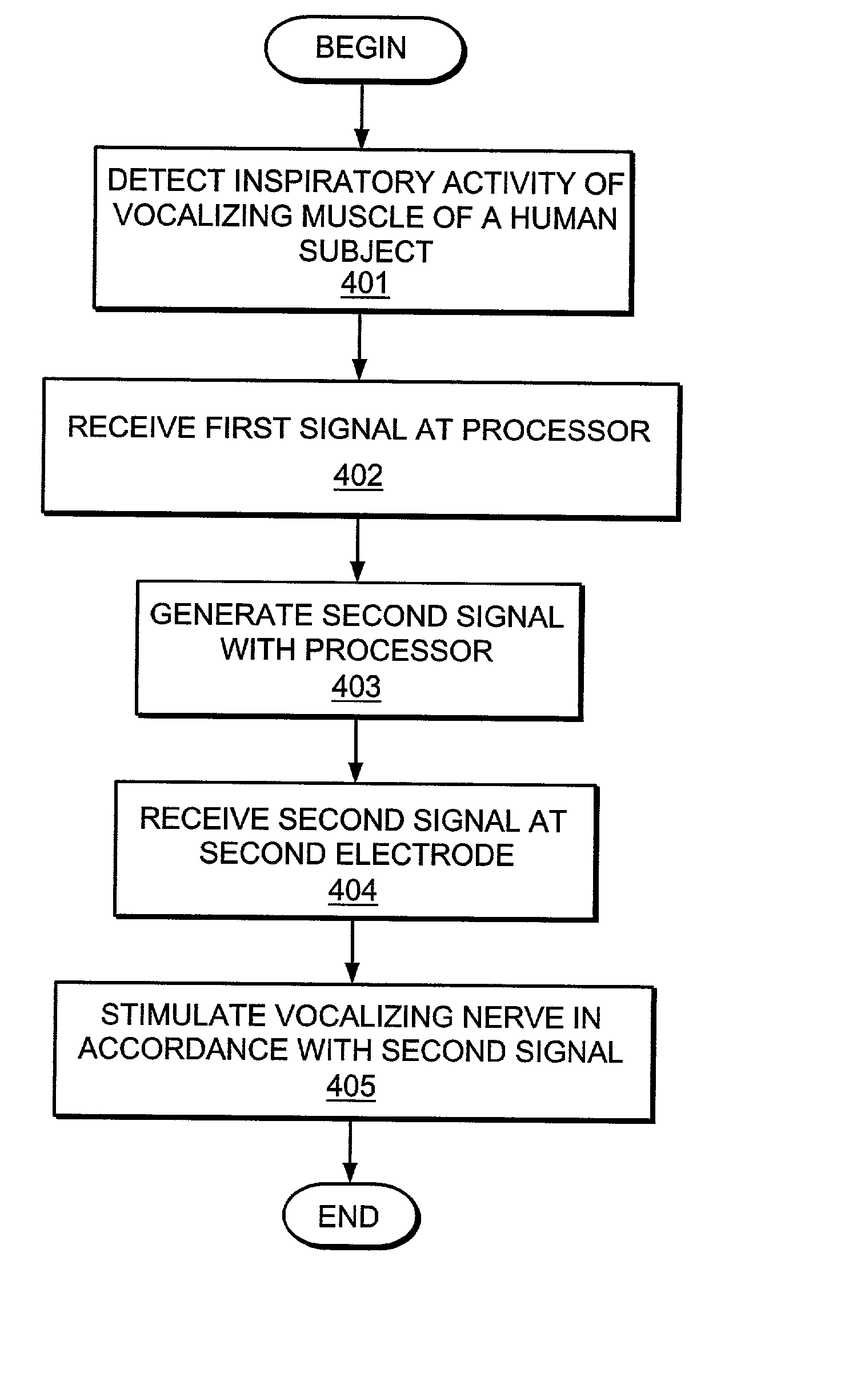Pacemaker for bilateral vocal cord autoparalysis
a technology of autoparalysis and pacemaker, which is applied in the field of pacemaker for bilateral vocal cord autoparalysis, can solve the problems of inability to prevent misdirected regeneration of nerve fibers, and inability to abduct reinnervated vocal cord
- Summary
- Abstract
- Description
- Claims
- Application Information
AI Technical Summary
Problems solved by technology
Method used
Image
Examples
Embodiment Construction
[0020] The underlying principle for stimulation with the device and methods of the invention is the frequency-dependent movement of the vocal cords due to RLN stimulation, as shown in FIG. 1. Such movement occurs as a result of the difference in contraction times between the abductor and adductor muscles. The contraction time of the only existing abductor of the vocal cords, the posterior cricoarytenoid ("PCA") muscle, is significantly longer than that of the adductor muscles. The RLN contains the nerve fibers to all muscles that act on the vocal cords (except the cricothyroid ("CT") muscle which is innervated by the superior laryngeal nerve ("SLN")), randomly distributed over the whole nerve. Consequently, an action potential generated by an electrical stimulation always reaches both abductor and adductor muscles. Thus, the glottis first closes due to the faster adductors, then it opens, and ends with relaxation which leads to a vibration of the vocal cords.
[0021] When stimulated a...
PUM
 Login to View More
Login to View More Abstract
Description
Claims
Application Information
 Login to View More
Login to View More - R&D
- Intellectual Property
- Life Sciences
- Materials
- Tech Scout
- Unparalleled Data Quality
- Higher Quality Content
- 60% Fewer Hallucinations
Browse by: Latest US Patents, China's latest patents, Technical Efficacy Thesaurus, Application Domain, Technology Topic, Popular Technical Reports.
© 2025 PatSnap. All rights reserved.Legal|Privacy policy|Modern Slavery Act Transparency Statement|Sitemap|About US| Contact US: help@patsnap.com



